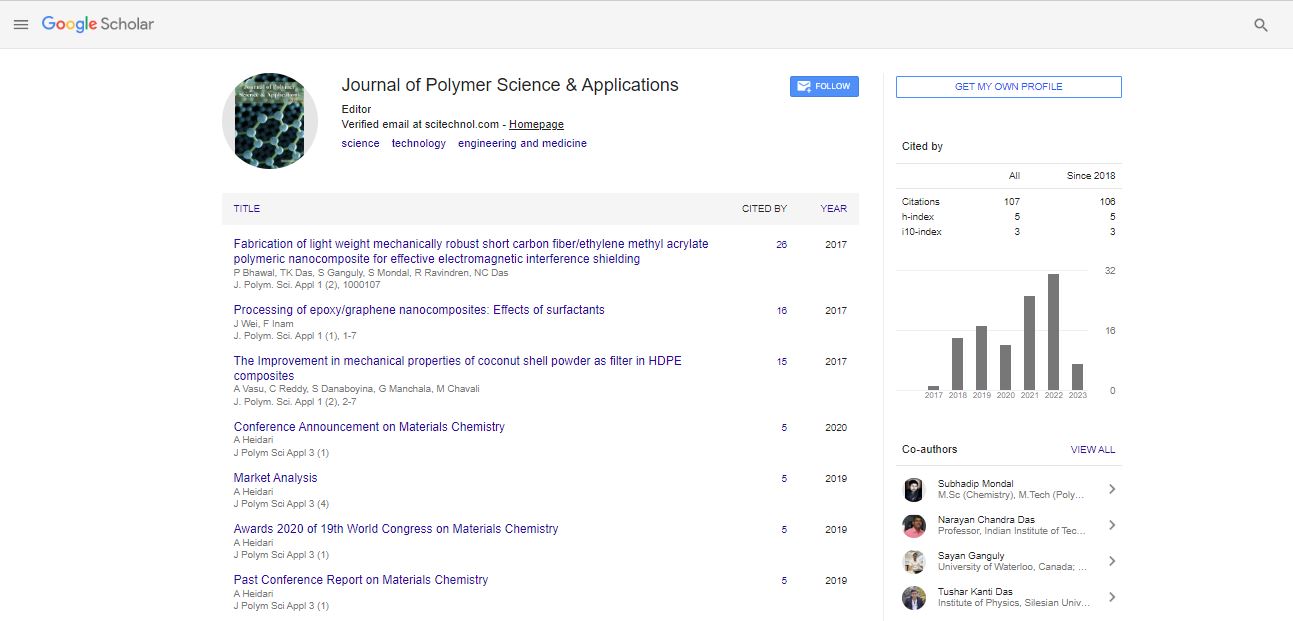Determination and validation of tetracycline residues in poultry by HPLC-DAD technique
Lobaina Alrhia and Issam Mohamad
Tishreen University, Syria
Tartous University, Syria
: J Polym Sci Appl
Abstract
The aim of this research is to validate an analytical method for separation and determination of trace Tetracycline residues in Poultry chest, thigh and liver, using High Performance Liquid Chromatography - Diode Array Detector (HPLC-DAD), with a mobile phase mixture consisting of acetonitrile: methanol: oxalic acid (0.01M) (25:15:60) and chromatographic column C8. The study was done on 32 live poultry individuals. All individuals were injected in the chest by 1ml of Tetracycline standard solutions, then slaughter for analysis throughout four successive days. The injection with 10×103 ppb of Tetracycline showed that the traces of Tetracycline residues (according to the Codex Alimentarius Commission) exceeded the value of the maximum residue limit (MRL = 200 ppb) in the thigh and chest meat at the 1st day and the 1st & 2nd days of slay respectively, and exceeded the value of (MRL = 600 ppb) in the liver at the 3rd and 4th days of slay. The validation criteria of the analytical method were recorded as follows: limit of detection LOD = 0.451 ppb, limit of quantification LOQ = 1.502 ppb, linear correlation coefficient R²=0.999066 within a range of concentrations between (100.0-300.0 ppb), decision limit CCα = 201.946, 202.763, 603.231 ppb, detection capability CCβ = 203.892, 205.527, 606.462 ppb for Poultry chest, thigh and liver, respectively, recovery percentages of Tetracycline at a concentration of 200.0 ppb for 20 sample Rec.% = (88.966 - 91.055%), (84.623 - 87.667%), (82.198 - 83.688%) for Poultry chest, thigh and liver respectively with a percentage relative standard deviations (RSD%) of < 1 %.
 Spanish
Spanish  Chinese
Chinese  Russian
Russian  German
German  French
French  Japanese
Japanese  Portuguese
Portuguese  Hindi
Hindi 